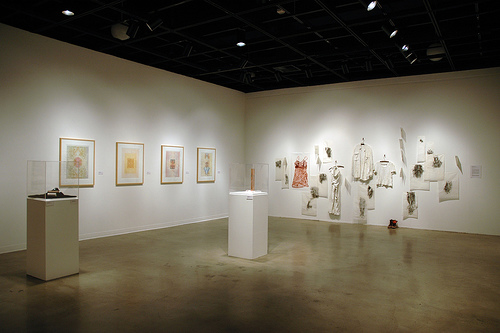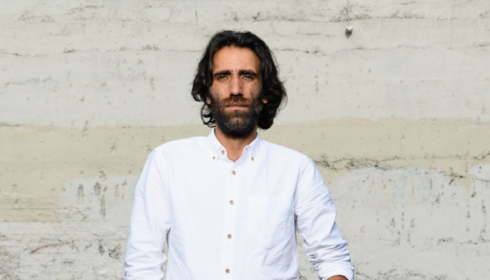
The Federal Government’s Creative Australia Policy was recently released by the outgoing Arts Minister Simon Crean, who came under fire for the use of the word “tolerance” in relation to people with a disability. This line has since been taken out but Arts Access Victoria has responded with dismay at the policy, not just for the wording about tolerance but also the inadequate amount of funding proposed for artists with a disability. The following is an interview with Kath Duncan, from Arts Access Victoria.
RN: Apparently the original published version of the Creative Australia Policy, which had a line in it about fostering “tolerance” of people with a disability, has since been changed. Were you aware of this?
Kath Duncan: Yeah, because there was such a huge outrage about it from the sector.
Do you think the replacement of Simon Crean with Tony Burke as Arts Minister will make a difference to the policy now?
Look, I think the main problem here is the National Arts and Disability Strategy, I think that was a 2009 document, made the government go “we need to do something about increasing the cultural participation of people with disabilities. Oh, this is a priority, blah blah”. So a lot of us were hoping that in this cultural policy they’d go “Hey, remember that document we released…well this time, we’re definitely going there”. And they’ve announced in this [Creative Australia] policy $20 million extra and we’ve all gone “that must be for us” but none of it is. And we’re all really shocked about this because in order to increase the cultural participation of people with disabilities means you actually need to spend a bit of money. Whether it’s captioning, interpreting, you know, just greater access. We’re not just talking about audience members; we’re talking about people being active artists and performers, participants in their own right. And it costs, it costs us, we know that here, that it costs.
Arts Access put forward in the media release on this policy that it needs $24 million over four years. And yet, the Creative Australia Policy has only allocated $500,000 towards people with a disability.
Yeah, that’s not going to go very far.
Could you explain further what the $24 million is needed for?
So far as I understand the strategy and what that costing is about, it’s about increasing resources, workshops, publicity – getting more people involved. And then it’s about things like transport, it’s about the cost of artists and audience members getting to venues. It’s also about… the [main] problem for people with a disability is a lack of income. We’re something like, in OECD [Organisation for Economic Co-operation and Development] countries – these figures came out last year, or the year before – that we, Australia, ranked twenty-seventh among OECD countries. Above us are countries like Turkey and so on, I don’t remember. In terms of income and employment; we feature really badly in terms of employment internationally [for people with a disability]. So people with disability don’t have much money so one of those other strategies is about subsidising arts companies, whether they’re big or small, to be able to give us reduced tickets and things like that. It’s about interpreting for performers, Auslan interpreting for deaf people, for rehearsals, for performances, being engaged. My understanding is it’s also about the modifications you need to make. Let’s take the Malthouse for instance, or the MCG [Melbourne Cricket Ground], so it’s about subsiding or at least making modifications to these spaces so people with disabilities can get in. There’s probably a whole lot of other things, the actual nitty gritty of it escapes me.
But the National Arts and Disability Strategy [also] talks about the need to involve people like carers and support workers of people with disabilities who often aren’t aware of where we can go, of where they can take people with disabilities. Particularly people with intellectual disabilities and so forth […] what sort of performances or museum exhibits, or whatever it is, might be appropriate. [Or] what sort of workshops are available. So that’s another whole area. It’s also about getting that information out there to people. I think in Australia there’s a kind of belief that the arts [sector] is elitist. So you know, people with intellectual disabilities, or other cognitive disabilities, won’t be interested. So there’s not much knowledge actually available about what’s approachable, what’s workable.
One of our big problems is [developing] professional pathways for artists.
I think also, part of that [costing] is also about training for people like myself, who are workers, to be able to climb up the ladder. I’m pretty much a grunt really and I love my grunt work but it’d be really good if I had more pathways myself. One of our big problems is [developing] professional pathways for artists. You can get them a mentor, you can get them one of those work for the dole schemes or disability support pensions and mobility allowance, but at the end of the traineeship, at the end of the apprenticeship, what is there? So it’s about that: what happens next?
Why do you think it is that the Government seems unaware of these needs and costs, as reflected in the Creative Australia Policy funding?
Well, they can’t be because they’re also debating the NDIS [National Disability Insurance Scheme], so I think this is why people are so gobsmacked because you’ve got this NDIS floating in the air and it’s almost like they’re saying “people with a disability have got this, why do you need this other thing [arts funding] for?”. We don’t understand it at all. It doesn’t make sense, that we can be part of the national priority agenda, for instance the NDIS, but when it comes to the arts…as, the way I see it, the NDIS, it’s not going to help me because I’m a fairly mobile disabled person, it’s going to help people who really need help. You know, people who are really quite potentially high needs, or kids and so forth. But we don’t understand why that’s sitting there and is so obvious and is publically debated and yet this other area [the arts] where people with disabilities contribute a lot and are actually really quite prominent in the field across Australia, why nothing goes there when they, the Federal Government, have already acknowledged our cultural participation as an issue, [this] is a problem.
…I think this is why people are so gobsmacked because you’ve got this NDIS floating in the air and it’s almost like they’re saying “people with a disability have got this, why do you need this other thing [arts funding] for?”
Would you say Simon Crean’s statement, in the opening address of the Creative Australia Policy, which follows “Our creative expression gives voice to us as individuals, challenges perceptions and helps us see the world through the eyes of others” is then not actually reflected in the policy?
Yeah, we don’t understand it. And I think that’s why there has been so much anger about it is because what they’re saying is not equating to what they’re spending. Is it all just rhetoric? You know, just to make us feel good, make them look good. But it’s really “show us the money”. I think it’s particularly disheartening for those of us who have been working in the arts since we were kids, like me, and who don’t find the sort of support or leadership options. For us, it’s more the whole charitable thing. Not so much here, at Arts Access Victoria, but there’s this perception that I’m doing this as a hobby and isn’t that nice, that poor woman working in that nice area, doing those nice things. And there’s not a sense that what I do is professional, that it’s of a high standard. There’s others I work with that produce really amazing work. Some of them even prefer not to be called deaf or disabled because they feel it will stigmatise their work. I mean, that’s where we’re at. So these significant, historical moments where a government can make a real choice to kind of lead a nation forward or not, and we were all expecting that [with the Creative Australia Policy] but we didn’t get that.
Do you know how much the Government consulted artists with a disability in regards to this policy?
Well, we [Arts Access Victoria] submit material to the Federal Government all the time. So does Arts Access Australia, who are the national body. We can’t work this out. We have all been quite vocal. We’re jumping up and down. The Australia Council [for the Arts] knows about us, Arts Victoria knows about us, there’s just a disconnect there. And I know they’ve removed the “when it comes to artists with a disability let us foster a culture of tolerance”, so they’ve removed the tolerance thing, but really that’s a bit of band-aiding. In fact, if that’s really what they thought then that’s your answer. That it’s okay to give us a wheelchair, or whatever the NDIS is all about, that that’s okay, but to see us as professionals in our own right, as professional artists, that’s just too weird for them. That our participation, our presence should be tolerated. What does that mean, as audience members, or as artists, that we are there to be tolerated? I mean, you wouldn’t say that about gay people, you wouldn’t say that about Indigenous people, you wouldn’t say that about poor people or single parents. It would be considered to be a heinous thing to say that about any other group. But apparently [it’s okay for us]. And apparently it was only us protesting that got that word taken out. And meanwhile, all around Australia, every day, hundreds – I’m going to suggest thousands but maybe I’m exaggerating that – of artists with disability go on making their stuff, whether it’s artwork, whether it’s sculpture, or whether it’s performance, costumes, cake-making, decorating, whatever it is, they go on doing their thing. And I guess even if there was no money, we would want to be acknowledged. And we didn’t even get that [so we’re] pissed off.
What does that mean, as audience members, or as artists, that we are there to be tolerated?


